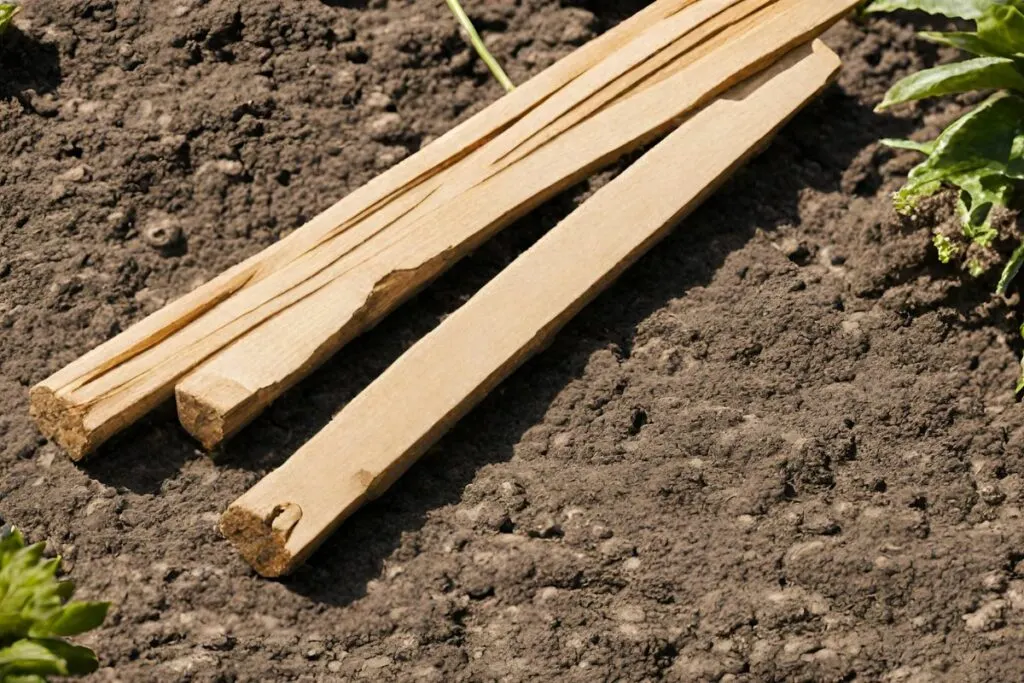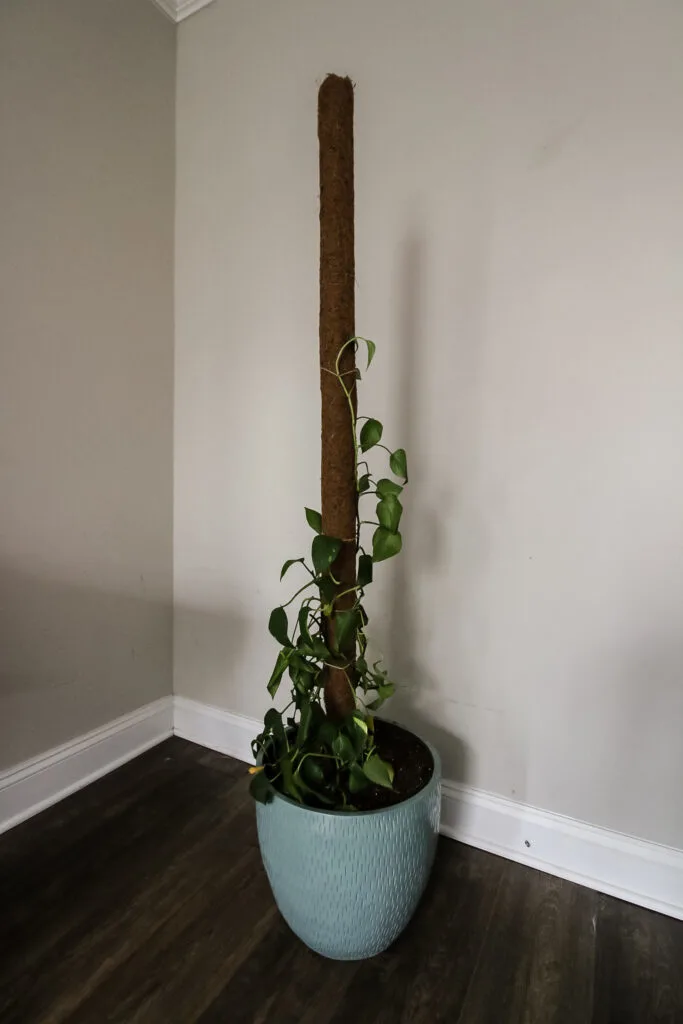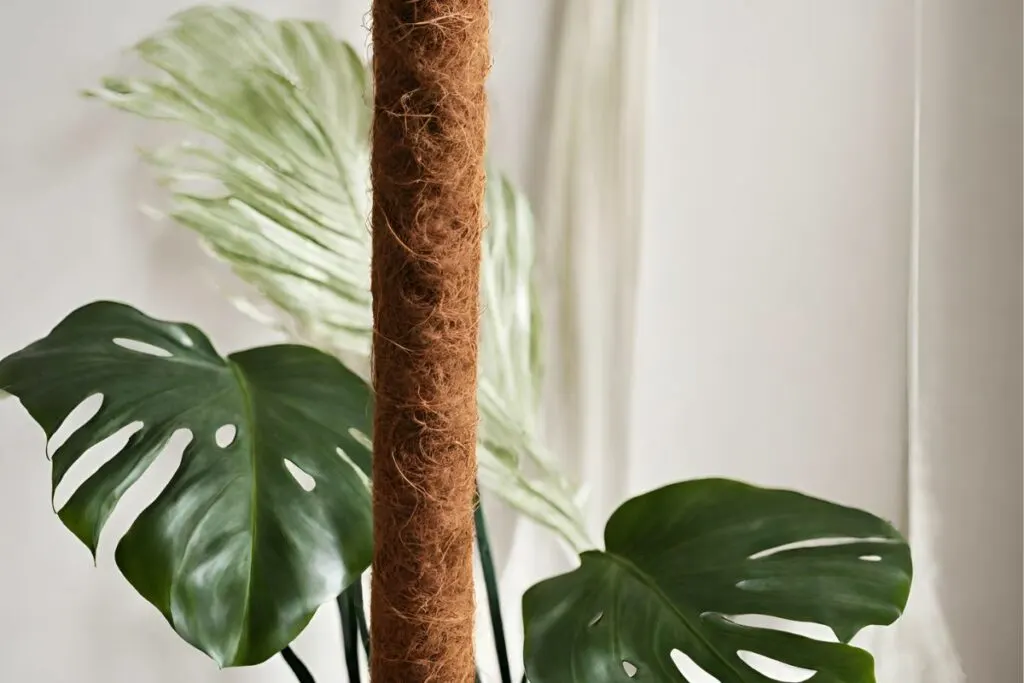Deciding between a moss pole vs stake for your climbing plants? Learn the differences and advantages of each to make the best decision for your greenery!
When it comes to staking plants, there are a couple of good options, and two of the best are moss poles and stakes.
Both these options are fantastic, but they come with their own little quirks.
In this article, we’ll go through the main differences that’ll help you decide on using moss pole vs stake.

What are the main differences between moss pole vs stake?
Although both provide the same results—plants standing tall and growing more healthily—they do so in different ways. So, what are the main differences?
Plant growth
Made from natural materials like moss or coconut coir, these poles offer a more natural surface for climbing plants.
Besides, they are better able to retain moisture, which helps keep the plant well-fed, helping plants reach their full growth potential.
On the other hand, stakes are made of wood, plastic, or metal.
Generally, plants find it harder to attach to these materials, which is why they don’t grow as fast or big as they would with moss poles.

Cost
Stakes are the more affordable option—especially since they’re more durable.
You can get a stake for about $10 from online retailers, garden centers, hardware stores, or home improvement stores.
On the other hand, moss poles can cost between $30 and $60, depending on multiple factors. Those include size, material, brand, retailer, and whether you decide to go DIY.

Convenience
Stakes are much easier to deal with, not only in terms of setup but also in terms of maintenance. All you have to do is stick the stake in the pot, and you’re good to go!
On the contrary, setting up a moss pole takes more work as it requires some planning.
And since moss poles are made of natural materials, they’re susceptible to damage, too. The main issue is the potential for molding, as they quickly retain moisture.
That’s why you should only opt for moss poles if you’re willing to maintain them properly to avoid leading your plant to rot.
Potting
Potting is an important aspect to keep in mind – and it’s usually overlooked.
With stakes, part of the soil will be taken up, and you might need to move the plant to a bigger pot to accommodate both the roots and the stake.
That’s not the case with moss poles, though.
Their structures lie mainly above the surface of the soil, and the plant can grow roots around the pole itself.
So it doesn’t end up relying completely on the root system below the soil.
Other factors to consider when staking your plants
Now that we’ve got the basics covered, let’s look at some other essential aspects to keep in mind when staking your plant.

Plant type
In general, moss poles are a good choice for climbing plants that need a lot of moisture, such as philodendrons and pothos.
They’re also good for plants with delicate aerial roots, such as Monsteras.
Stakes, on the other hand, are excellent for low-maintenance plants, such as Sabu Blues, ZZ plants, or snake plants.
Attachment Method
There are plenty of attachment methods that you can use to secure your plant to the moss pole or stake, yet some work better with each setup.
Clear packing tape is a good option to use with stakes. It allows the aerial roots to be secured firmly to the back of the board.
This is contrary to plant wires or velcro, which leave some wiggle room.
On the other hand, wiring may be your best bet with moss poles, as you can seamlessly wrap it around the grills around the moss.
Before you go…
Both moss poles and stakes have distinct benefits. Depending on your plant’s needs and your own, you can easily choose between them.
If you’re looking for more tips on how to kickstart your planting journey, make sure to check our handy guide.
Thanks for reading!


Hey there, I’m Morgan, a houseplant enthusiast from sunny Charleston, South Carolina. Growing up surrounded by my mom’s lush orchids and African violets, I discovered the magic of bringing nature indoors. Thanks to the pandemic, I delved deeper into houseplants, discovering their power to uplift moods and transform spaces. I’m here to spill all my secrets, helping you pick the perfect houseplant – and make it happy. Let’s keep your plants alive, together! 😊
